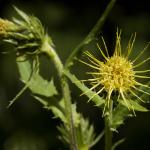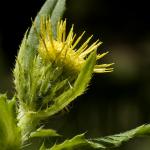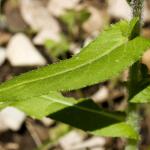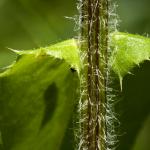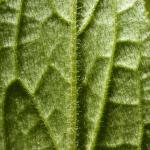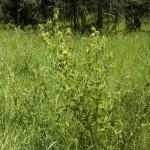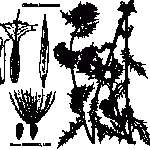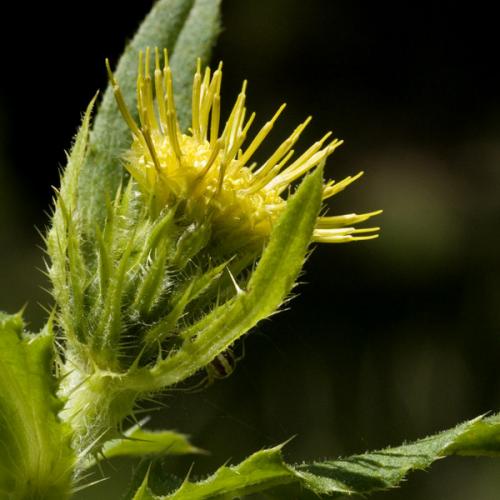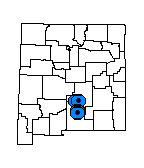Description
Biennial; stems to 1 m tall, unbranched below the middle, with few ascending branches above, densely cobwebby and finely hairy at first, becoming sparsely hairy to nearly naked as it ages; leaves lance-shaped to nearly linear in outline, to 20 cm, glabrous on both surfaces except the midvein often sparsely long hairy; upper leaves lance-shaped or oblong, clasping, with rounded ear-like lobes at the base, spiny on the margins; flowers yellowish to greenish-yellow; flower heads in clusters of three at the ends of the branches, or occasionally solitary, up to 2 cm wide, subtended by reduced spiny leaves; involucral bracts in several series, outer bracts lance-shaped, spine-tipped, smooth, or faintly cobwebby, margins with yellowish spines. Flowers July to September.
Similar Species
Wooton and Standley compared this species to other yellow flowered-thistles as follows, "Originally this collection was determined as Cirsium parryi, and it is nearer to that than to any other species. It differs in having fewer heads and slightly if at all arachnoid bracts with pectinately spiny margins and less dilated tips. The leaves, too, are not nearly as spiny as in that species, and only the innermost bracts have dilated tips, while in C. parryi almost all have them." Cirsium parryi has conspicuously cobwebby, hairy involucral bracts.
Distribution
New Mexico, Lincoln and Otero counties, Sacramento Mountains.
Habitat
Mountain meadows and roadsides over 2,288 m (7,500 ft).
Conservation Considerations
This species is relatively frequent within its limited range. It appears to increase in response to disturbance.
Important Literature
*New Mexico Native Plants Protection Advisory Committee. 1984. A handbook of rare and endemic plants of New Mexico. University of New Mexico Press, Albuquerque.
Schaack, C.G and G.A. Goodwin. 1991. A new subspecies of Cirsium (Asteraceae: Cynareae) from the Mogollon Escarpment, Arizona. Madroño 37:299-304.
Wooton, E.0. and P.C. Standley. 1913. Descriptions of new plants preliminary to a report upon the flora of New Mexico. Contributions from the U.S. National Herbarium 16:109-196.
Wooton, E.0. and P.C. Standley. 1915. Flora of New Mexico. Contributions from the U.S. National Herbarium 19:1-793.

